Celebrating the Remarkable Life and Work of Frederick Douglass through America’s Historical Imprints
This year’s Black History Month marks 200 years since the birth of Frederick Douglass, one of the most influential Americans of the 19th century. While America’s Historical Newspapers includes The North Star, the forceful anti-slavery newspaper Douglass began publishing in Rochester, New York, in 1847, America’s Historical Imprints contains a wealth of primary source material recording, remembering, and celebrating his remarkable life and work.

In his first autobiography, Narrative of the Life of Frederick Douglas, found in Black Authors, 1556-1922: Imprints from the Library Company of Philadelphia, Frederick writes of his parents.
My mother was named Harriet Bailey. She was the daughter of Isaac and Betsey Bailey, both colored, and quite dark. My mother was of a darker complexion than either my grandmother or grandfather.
My father was a white man. He was admitted to be such by all I ever heard speak of my parentage. The opinion was also whispered that my master was my father; but of the correctness of this opinion, I know nothing; the means to knowing was withheld from me. My mother and I were separated when I was but an infant – before I knew her as my mother. It is a common custom, in the part of Maryland from which I ran away, to part children from their mothers at a very early age.
He continues, describing his relationship with his mother:
Very little communication ever took place between us. Death soon ended what little we could have while she lived, and with it her hardships and suffering. She died when I was about seven years old, on one of my master’s farms, near Lee’s Mill. I was not allowed to be present during her illness, at her death, or burial. She was gone long before I knew any thing about it.
Douglass offers what little information he had of his father:
The whisper that my master was my father, may or may not be true; and, true or false, it is of but little consequence to my purpose whilst the fact remains, in all its glaring odiousness, that slaveholders have ordained, and by law established, that the children of slave women shall in all cases follow the condition of their mothers; and this is done too obviously to administer to their own lusts, and make a gratification of their wicked desires profitable as well as pleasurable; for by this cunning arrangement, the slaveholder, in cases not a few, sustains to his slaves the double relation of master and father.
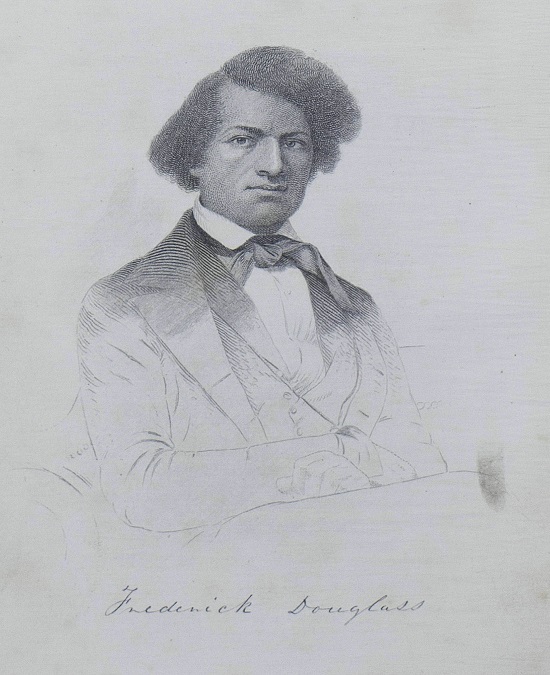
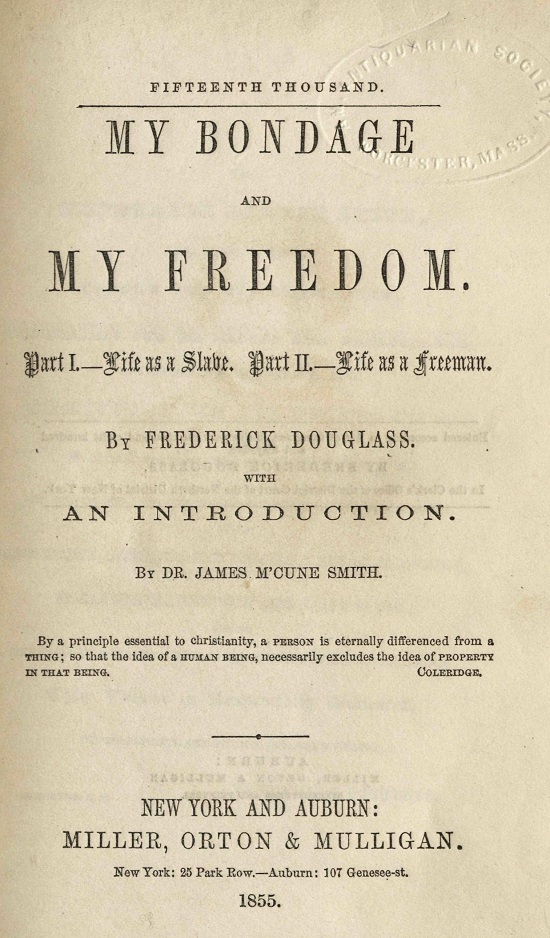
The American Slavery Collection, 1820-1922: From the American Antiquarian Society includes his second autobiography, My Bondage and My Freedom, in which Douglas describes his oft felt hunger as a child:
Want of food was my chief trouble the first summer at my old master’s. Oysters and clams would do very well, with an occasional supply of bread, but they soon failed in the absence of bread. I speak but the simple truth, when I say, I have often been so pinched with hunger, that I have fought with the dog – “Old Nep” – for the smallest crumbs that fell from the kitchen table, and have been glad when I won a single crumb in the combat. Many times have I followed, with eager step, the waiting-girl when she went out to shake the table cloth, to get the crumbs and small bones flung out for the cats. The water, in which meat had been boiled, was as eagerly sought for by me. It was a great thing to get the privilege of dipping a piece of bread in such water; and the skin taken from rusty bacon, was a positive luxury.
In a chapter titled “Loneliness and Sorrow,” from the latter section of My Bondage My Freedom, Douglass reflects on the choices made by his fellow escaped slaves.
Some apology can easily be made for the few slaves who have, after making good their escape, turned back to slavery, preferring the actual rule of their masters, to the life of loneliness, apprehension, hunger, and anxiety, which meets them on their first arrival in a free state. It is difficult for a freeman to enter into the feelings of such fugitives. He cannot see things in the same light with the slave, because he does not, and cannot, look from the same point from which the slave does.
He continues:
A man, homeless, shelterless, breadless, friendless, and moneyless, is not in a condition to assume a very proud or joyous tone; and in just this condition was I, while wandering about the streets of New York city and lodging, at least one night, among the barrels or one of its wharves. I was not only free from slavery, but I was free from home, as well. The reader will easily see that I had something more than the simple fact of being free to think of, in this extremity.
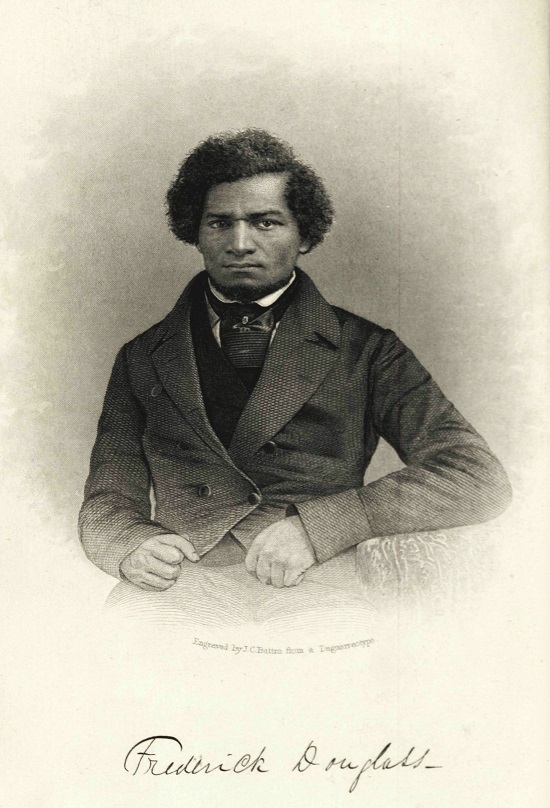
Of course, Douglass did not remain in such a condition. Not long after his successful escape from slavery in 1838, Douglass was recognized for his impressive oratory and he became a national leader of the abolitionist movement in Massachusetts and New York.
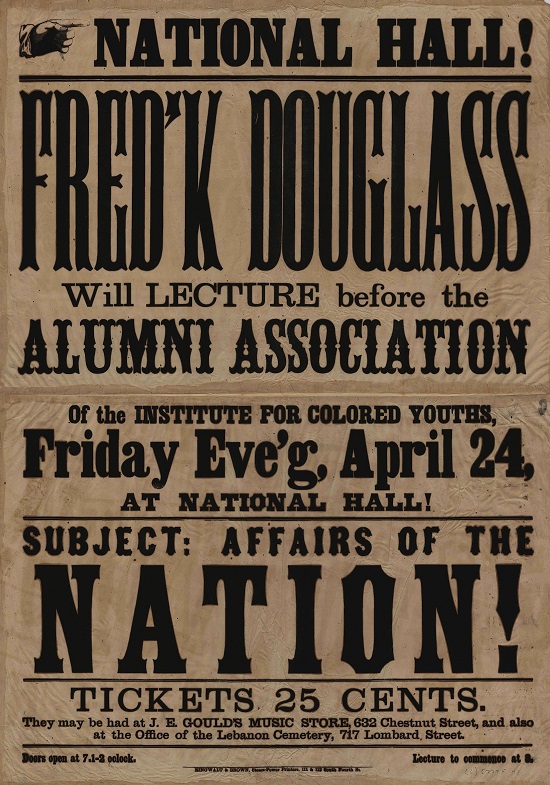
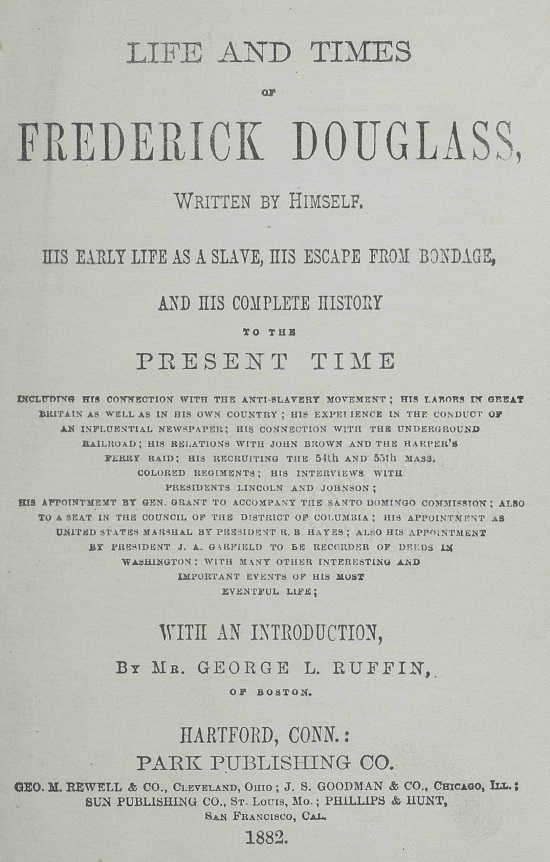
In 1881 he wrote a third autobiography, Life and Times of Frederick Douglass. Both the first edition and the revised edition are found in Afro-Americana Imprints, 1535-1922: Imprints from the Library Company of Philadelphia. While memorializing President Garfield, Douglass describes a scene illustrating the extent of which his condition had improved.
It seems only as yesterday, that in my quality as United States Marshal of the District of Columbia, it was made my duty and privilege to walk at the head of the column in advance of this our President-elect, from the crowded Senate Chamber of the National Capital, through the long corridors, and the grand rotunda, beneath the majestic dome, to the platform on the portico, where amid a sea of transcendent pomp and glory, he who is now dead, was hailed with tumultuous applause from uncounted thousands of his fellow citizens, and was inaugurated Chief Magistrate of the United States.
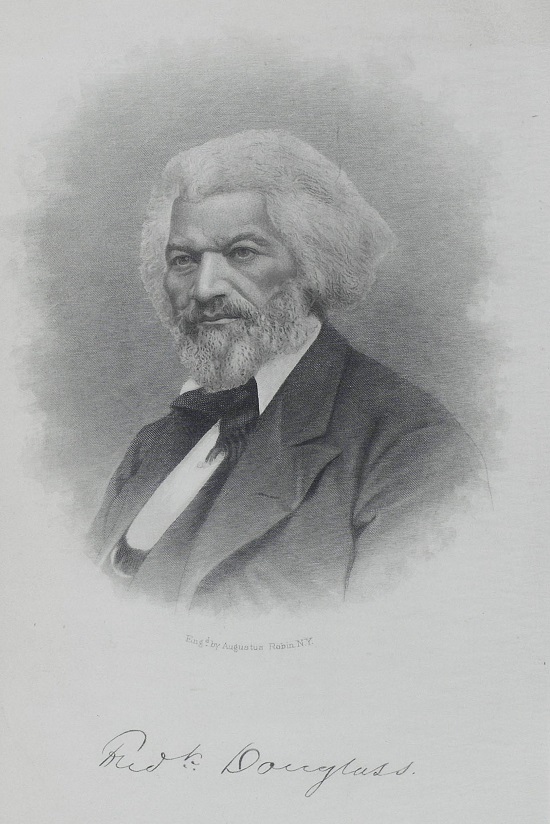
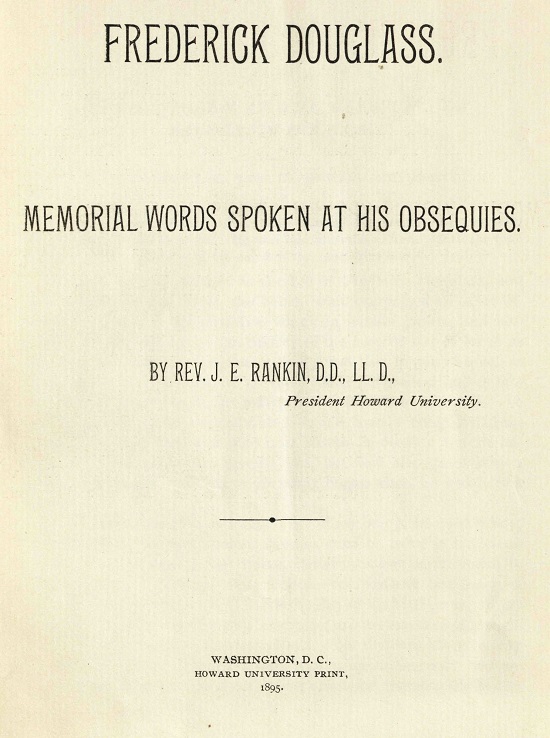
After speaking at a meeting of the National Council of Women in Washington, D.C., on February 20, 1895, Dougless unexpectedly died of a heart attack at his Anacostia home. Thousands of Americans black and white attended his funeral held at the Metropolitan African Methodist Episcopal Church. In Frederick Douglass: Memorial Words Spoken at his Obsequies, Jeremiah Eames Rankin, fellow abolitionist and president of Howard University, refers to William Lloyd Garrison and Wendell Phillips before turning his attention to Douglass.
But they needed him as much as he needed them. After their cool and eloquent logic, after their studied irony and invective, which, mighty as it was, was wanting in the tremolo of the voice of one that has suffered, of one whose very modulations signified more than their words; when this man arose, as one rises from the dead, as the ghost of one, the crown and scepter of whose manhood has been stolen away, while he goes from land to land proclaiming the wrong and asking for justice, then the climax was reached. This man made the work of such men as Garrison and Phillips and Sumner and even Lincoln possible. I do not wish to use the language of exaggeration. It is not fitting the occasion. It is not in keeping with the dignified manner and methods of the man whom we commemorate, or the proverbial movement of which he was so long a part. But I believe that the birth of Frederick Douglass into slavery was the beginning of the end.

Eight years after the death of Douglass, John W. Thompson wrote An Authentic History of the Douglass Monument and included an array of illustrations of the man and the monument.
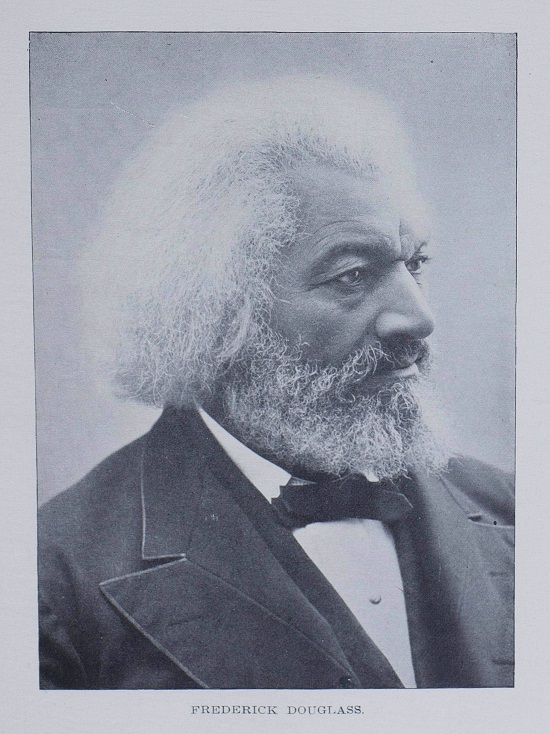
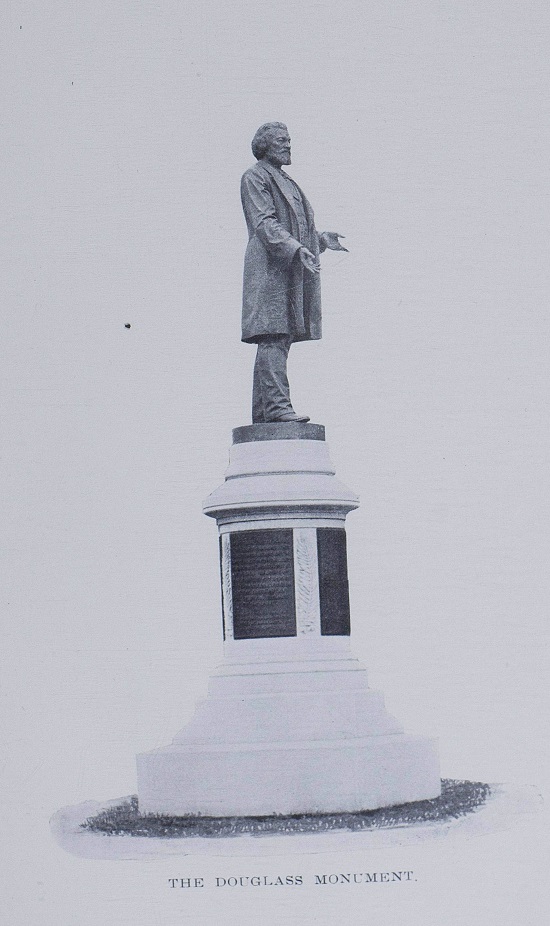

And a dozen years after the death of Douglass, Booker T. Washington penned Frederick Douglass which includes the following description of Douglass’s Rochester home.
To be more explicit, the Underground Railway was a system of clandestine travel, extending from the borders of “Mason and Dixon’s Line” through the North and West to Canada. The residence of Mr. Douglass was one of the last stations on the line before reaching British soil. Much has been written about this mysterious railway, but the details of its activities have never been told.
Washington goes on to provide important details of the railway and Douglass’s role in its operation.
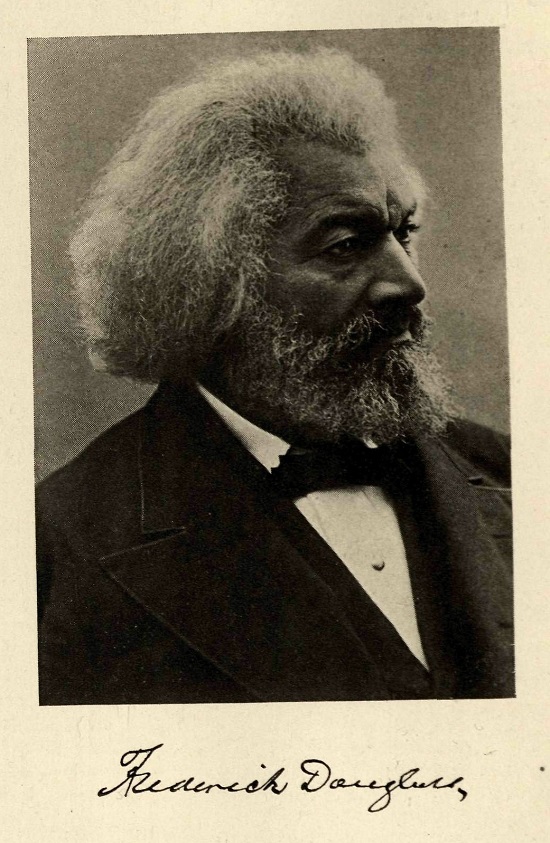
For more information about using Readex collections to celebrate Black History Month at your institution, please contact readexmarketing@readex.com



